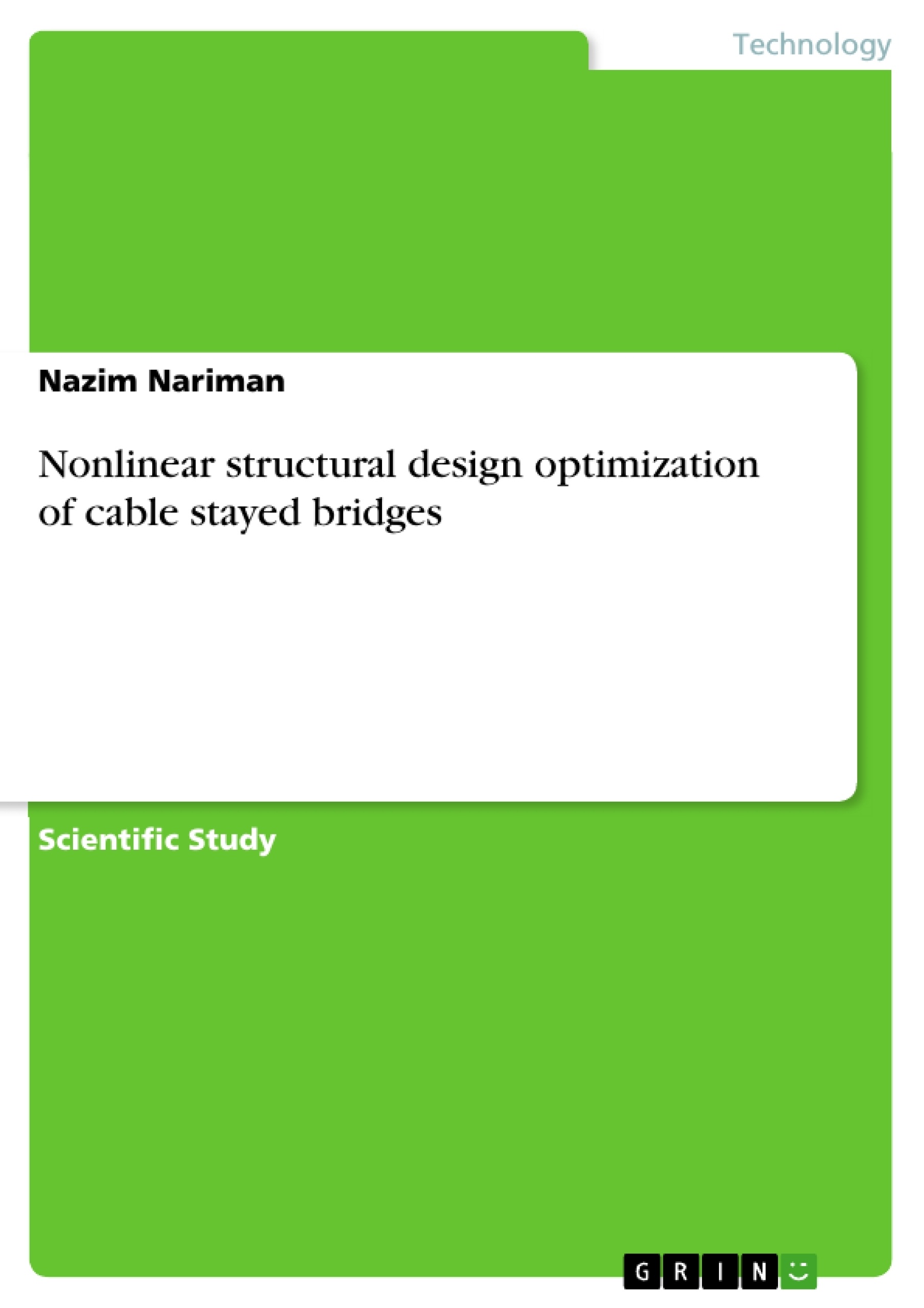In this research, many models of a cable stayed bridge were generated using ABAQUS finite element commercial software for the purpose of proceeding with nonlinear design optimization on the shape and topology of the structure. The cable stayed bridge models in all cases are with a constant length and width for the deck, also the pylons height under and above the deck is constant, but the shape of stay cables arrangement varies to three main famous arrangements which are Fan, Semi harp and Harp.In addition to change in the pylons shape which are three known shapes Double out, Single Center and Single inclined out, and it is worthy to mention that in all cases of the shape optimization of the pylons , the stay cables arrangements are Fan style, andby governing computational nonlinear optimization process on the finite element models in all cases of shape and topology optimization through using static general step for analysis and a certain meshing type with global seeding size for the Beam elements, with a fixed and pinned boundary conditions for the deck supports and fixed boundary for the pylons.Concentrated static loads assigned on the same positions on the deck for all models cases.
A numerical optimization and graphical simulation of the results were used to determine many responsesin the model cases which areReactions, Deflections and Mises stresses in the structural models of the cable stayed bridge, especially at the deck, pylons and the stay cables which are the main components of the structure, also the same step in the deck and pylons supportshas been done for optimization outputs.
It is apparent and clear that the cable stayed model with the Fan arrangement of the stay cables showed efficiency and the best topological model case for the structural design optimization that involved a safe, robust, rigid, and safe for the design of cable stayed bridges.
The pylon shape with double out case was the best design situation compared with the other two models single center and single inclined out shapes, this point was obvious in the reactions, deflections and Mises stresses for the deck supports and the deck itself, and as a result the Double out with a Fan shape arrangement of the cable stays is the best model for the design of cable stayed bridges to resist the static loads.
Inhaltsverzeichnis (Table of Contents)
- Chapter 1
- 1.1 Introduction
- 1.2 Literature Review
- 1.3 Objective
- 1.4 Optimal Design of Cable-Stayed Bridges
- 1.5 Structural Design Optimization
- 1.6 Optimization Techniques
- 1.7 Load Factor Optimization
- 1.8 Cable Stayed Bridge Structural Concept
- Chapter 2
- 2.1 Cable Stayed Bridge Components
- 2.1.1 Deck
- 2.1.2 Pylon
- 2.1.3 Stay Cables
- 2.1 Cable Stayed Bridge Components
Zielsetzung und Themenschwerpunkte (Objectives and Key Themes)
This research aims to optimize the shape and topology of cable-stayed bridges using nonlinear design optimization techniques. This is achieved by employing ABAQUS finite element software to generate various bridge models with different stay cable arrangements and pylon shapes. The research explores the structural behavior of the cable-stayed bridge under static loads, analyzing responses such as reactions, deflections, and Mises stresses in key components.- Nonlinear structural design optimization of cable-stayed bridges
- Finite element analysis of cable-stayed bridges using ABAQUS
- Optimization of stay cable arrangements and pylon shapes
- Analysis of structural responses under static loads
- Comparison of different design configurations for optimal performance
Zusammenfassung der Kapitel (Chapter Summaries)
Chapter 1
This chapter introduces the concept of cable-stayed bridges and provides a literature review on the topic. It outlines the objectives of the research, focusing on optimal design and structural design optimization. The chapter also explores various optimization techniques, load factor optimization, and the structural concept of cable-stayed bridges.Chapter 2
Chapter 2 delves into the components of cable-stayed bridges, specifically focusing on the deck, pylon, and stay cables. This chapter lays the foundation for analyzing the structural behavior of these key components in subsequent chapters.Schlüsselwörter (Keywords)
The research focuses on nonlinear structural design optimization, cable-stayed bridges, finite element analysis, ABAQUS, stay cable arrangements, pylon shapes, static loads, reactions, deflections, Mises stresses, and optimal design configurations.- Citation du texte
- Nazim Nariman (Auteur), 2013, Nonlinear structural design optimization of cable stayed bridges, Munich, GRIN Verlag, https://www.grin.com/document/265214



